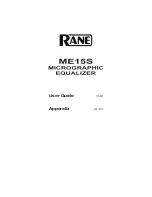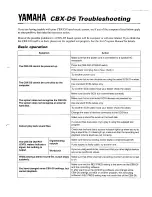
Equalizer Installation and Administration Guide
127
Glossary
This glossary defines some of the key terms used in this document. Some of these
definitions are based on RFC1208, “A Glossary of Networking Terms.”
1
administration interface
The browser-based interface for setting up and managing the operation of Equalizer.
administration address
The IP address assigned to Equalizer on the internal network.
authoritative name server
A name server that maintains the complete information for a particular part of the domain name
space.
back-end server
A physical server on the internal network that receives connection requests from Equalizer.
Class C network
One of three different network classes supported by IP addressing. A Class C network allocates
24 bits for the IP address network-address field and 8 bits for the host field.
cluster
See virtual cluster.
cluster address
The IP address assigned to a particular cluster configured on Equalizer.
DNS
Domain Name System.
domain name
The name that identifies a host on the Internet.
endpoint
An IP address-port pair that identifies a TCP service.
external address
The IP address assigned to Equalizer on the external network.
external interface
Equalizer’s network interface that is used to connect Equalizer to the external network.
external network
The subnet to which the client machines and possibly the Internet or an Intranet are connected.
FTP cluster
A virtual cluster providing service on the FTP control port (port 21).
FQDN
Fully Qualified Domain Name.
fully qualified domain name
The absolute domain name of a host on the Internet. A fully qualified domain name is written
relative to the root domain and unambiguously specifies a host’s location in the DNS hierarchy.
For example,
east
is a hostname and
east.coyotepoint.com
is its fully
qualified domain name.
FXP0
Equalizer’s external interface port.
FXP1
Equalizer’s internal interface port.
geographic cluster
A collection of sites that provide a common service, such as a web site. The different sites in a
geographic cluster are often separated by large distances.
geographic load balancing
Distributing requests across servers in different physical locations.
geographic probe
A query sent t to a site in a geographic cluster to gather information so Equalizer can determine
which site is best able to process a pending request.
internal address
The IP address assigned to Equalizer on the external network.
internal interface
Equalizer’s network interface that is used to connect Equalizer to the external network.
internal network
The subnet to which the back-end server machines are connected.
IP address
A 32-bit address assigned to a host using TCP/IP. IP addresses are written in dotted decimal
format, for example, 192.22.33.1.
Содержание Equalizer
Страница 2: ......
Страница 4: ...iv Coyote Point Systems Inc ...
Страница 32: ...Chapter 2 Installing Equalizer 22 Equalizer Installation and Administration Guide ...
Страница 42: ...Chapter 3 Configuring Equalizer 32 Equalizer Installation and Administration Guide ...
Страница 70: ...Chapter 4 Administering Equalizer Operation 60 Equalizer Installation and Administration Guide ...
Страница 104: ...Chapter 6 Administering Geographic Clusters 94 Equalizer Installation and Administration Guide ...
Страница 108: ...Chapter 7 Troubleshooting 98 Equalizer Installation and Administration Guide ...
Страница 114: ...Appendix B Using Reserved IP Addresses 104 Equalizer Installation and Administration Guide ...
Страница 118: ...Appendix C Regular Expression Format 108 Equalizer Installation and Administration Guide ...
Страница 130: ...Appendix E Technical Specifications 120 Equalizer Installation and Administration Guide ...
Страница 136: ...Appendix F License and Warranty 126 Equalizer Installation and Administration Guide ...








































